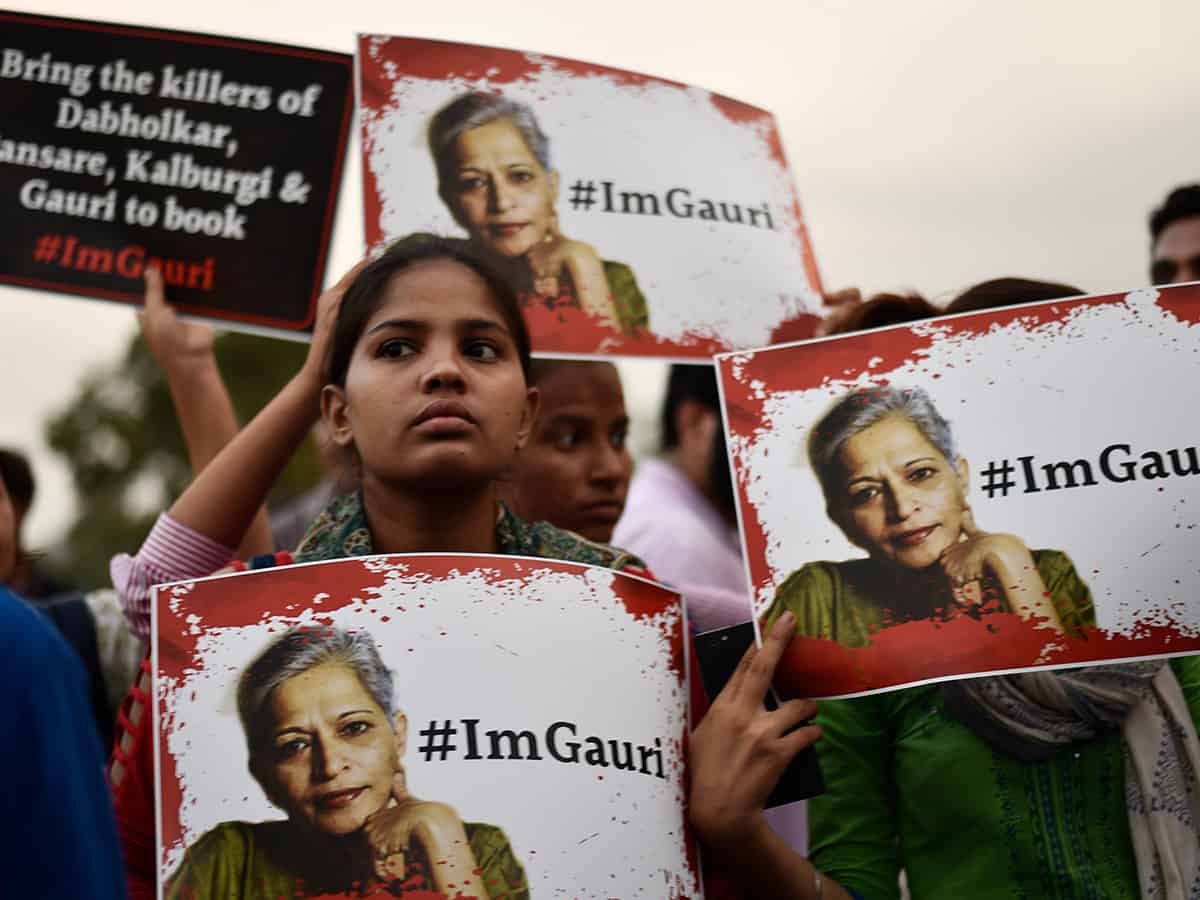On September 5, 2017, when journalist Gauri Lankesh was returning home from work, a man, who was obscured in a helmet, approached her in the driveway. He fired a pistol as she ran towards her house, about 10 feet away. She collapsed even before she could make it inside. She had been shot twice in the chest and once in the back. A fourth shot had missed or misfired, the autopsy reports suggested.
It has been three years since the assassination of Lankesh shook the collective conscience of the nation.
Who was Gauri Lankesh?
The editor of Gauri Lankesh Patrike, a weekly newspaper, Gauri was an outspoken critic of Narendra Modi’s government. In fact, her last editorial ‘In the Age of False News,’ claimed that it was fake news that contributed to the victory of the Bharatiya Janata Party in 2014 elections.
Lankesh’s work was known to, and admired by, those connected to progressive politics in India—people critical of Hindu nationalism, crony capitalism, sexism, and casteism. But, it remained highly invisible to those beyond those realms.
Who killed Gauri Lankesh?
Parashuram Waghmore, Lankesh’s killer who confessed to his crime said to the Special Investigation team probing the case, “I was told to kill her to save my religion.”
The SIT said that the plan to kill Lankesh was hatched a year before the assassination in 2017. Amol Kale, a former Hindu Janjagruti Samiti convener, hired killer Parshuram Waghmare, who was allegedly a member of the Sri Ram Sene. On September 5, he and another back-up gunman Ganesh Miskin arrived outside Lankesh’s house on a black motorcycle. Waghmare fired four times at Lankesh and the duo fled the scene.
How Lankesh was killed?
Her assassination, however, cannot be seen in isolation. In August 2013, the activist Narendra Dabholkar, who campaigned against religious superstitions, was murdered. In August 2015, M. M. Kalburgi, a scholar and outspoken critic of idol worship among Hindus, was gunned down at his own doorstep. In February 2015, Govind Pansare, a Communist leader, community organizer and columnist, was killed in a small town near Mumbai. Mr. Dhabolkar, Mr. Kalburgi and Mr. Pansare were murdered by assassins on motorbikes, who hid their faces with helmets and fled after the murder.
The murdered intellectuals also wrote in regional languages and worked as activists. Each one of them shared the quality of being acceptable to the leftist and Dalit groups. They could bring together communities opposed to the Hindu Right. Various supporters of the BJP government and Rashtriya Swayamsevak Sangh celebrated Lankesh’s murder on social media.
Justice delayed
On November 23, 2018, the Karnataka Special Investigations Team (SIT) filed an elaborate and foolproof supplementary charge-sheet after gathering 456 witnesses and 1,056 pieces of evidence against 17 of the 18 arrested accused in the case. The main charge-sheet and the supplement, together running almost 10,000 pages were filed by S. Balan, the special public prosecutor who has appointed to handle the case, but the court has not yet begun trial.
Her family and friends have had a frustrating time convincing the Karnataka state government to set up a dedicated special fast track court for this case but in vain. The situation further exacerbated with the outbreak of COVID-19. Three years on, justice remains delayed.
The police have filed a charge-sheet against 17 persons for murder, conspiracy, destruction of evidence along with several other sections under the Indian Penal Code. The police have also invoked sections of the Indian Arms Act and Karnataka Control of Organised Crime Act (KCOCA) against all the accused.
Cost of free speech
India stands in the 142nd place in the Press Freedom Index 2020. In the cases of 30 journalists murdered since 2010 being tracked by the Indian media watchdog The Hoot, there has been exactly one conviction.
While ‘self-proclaimed’ journalists like Suresh Chavhanke get away with vile comments made on broadcast channels, it is for the ones like Lankesh that free speech costs life.
Siddhartha Deb, in his Columbia Journal Review article, wrote, “Sometimes, it appears as if the enemy is information itself, along with transparency, exposure, critical thinking—anything and everything that might be seen as characteristic of a free, open society.” It is not the journalists and rationalists that are under threat, the whole idea of free speech is!

